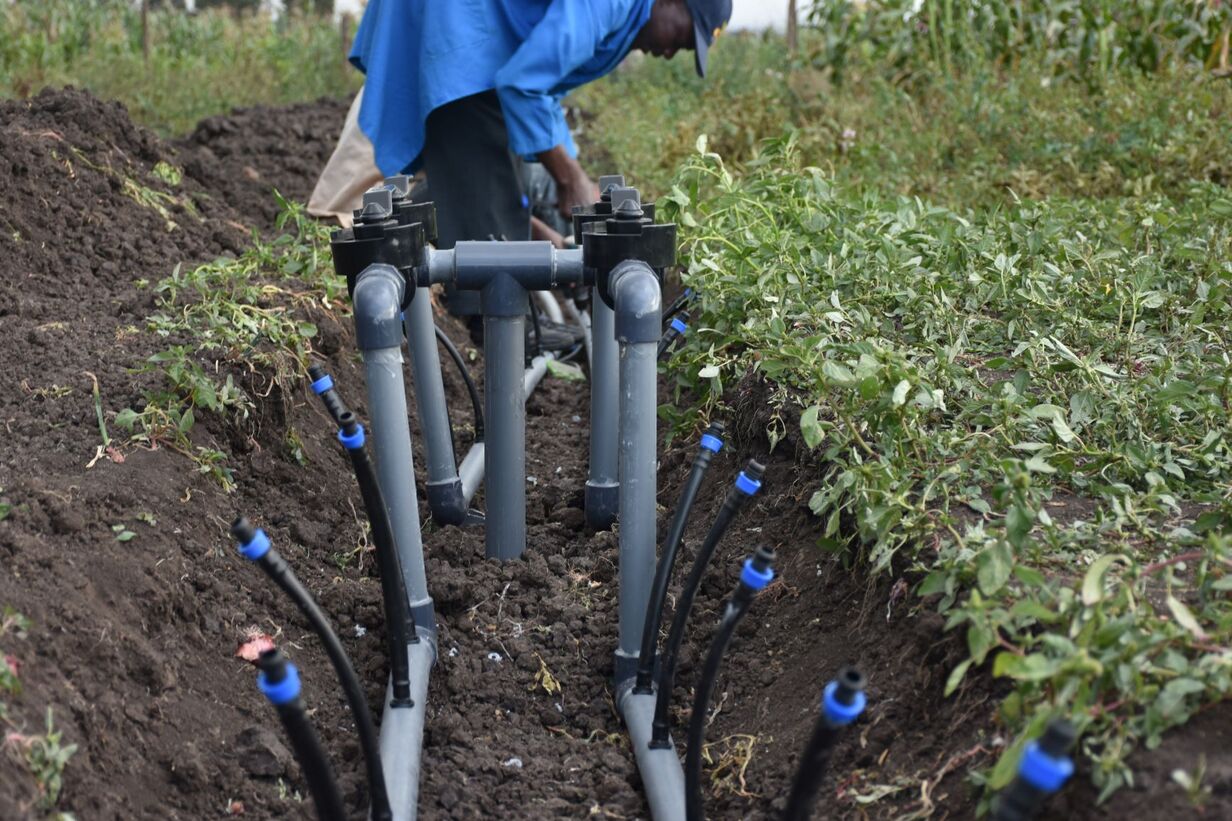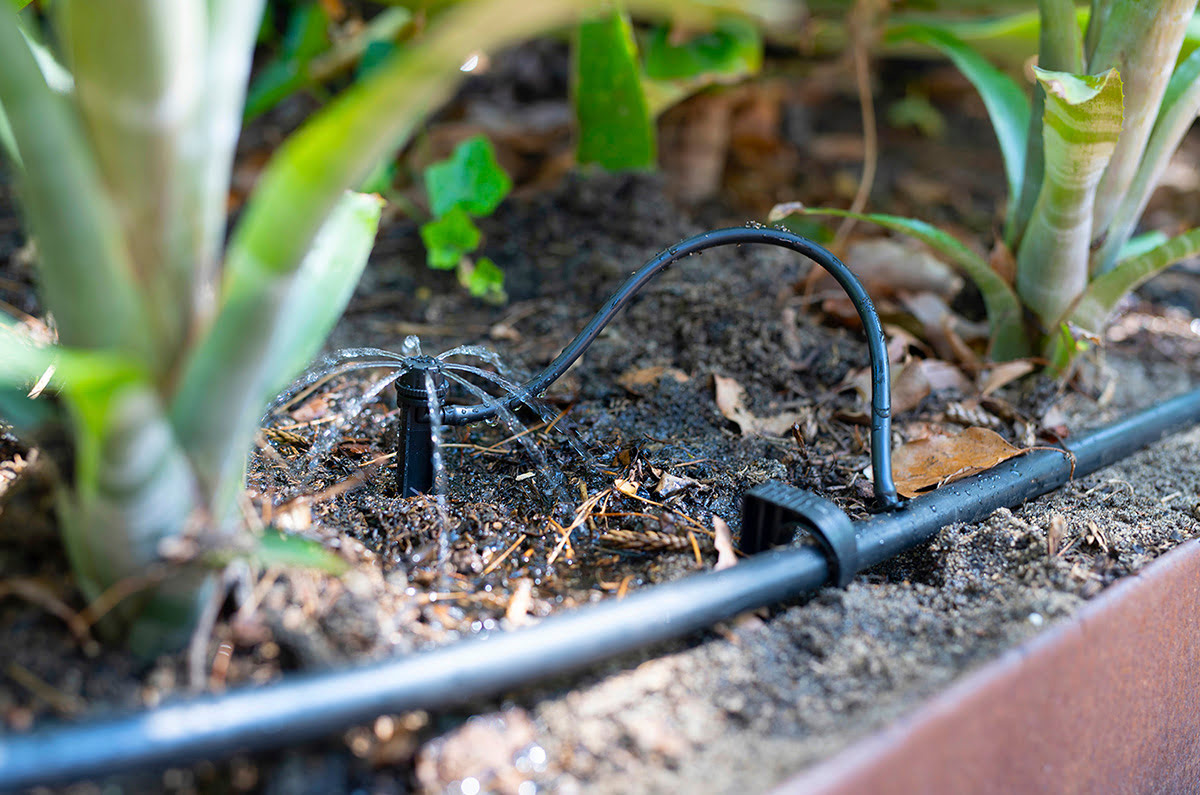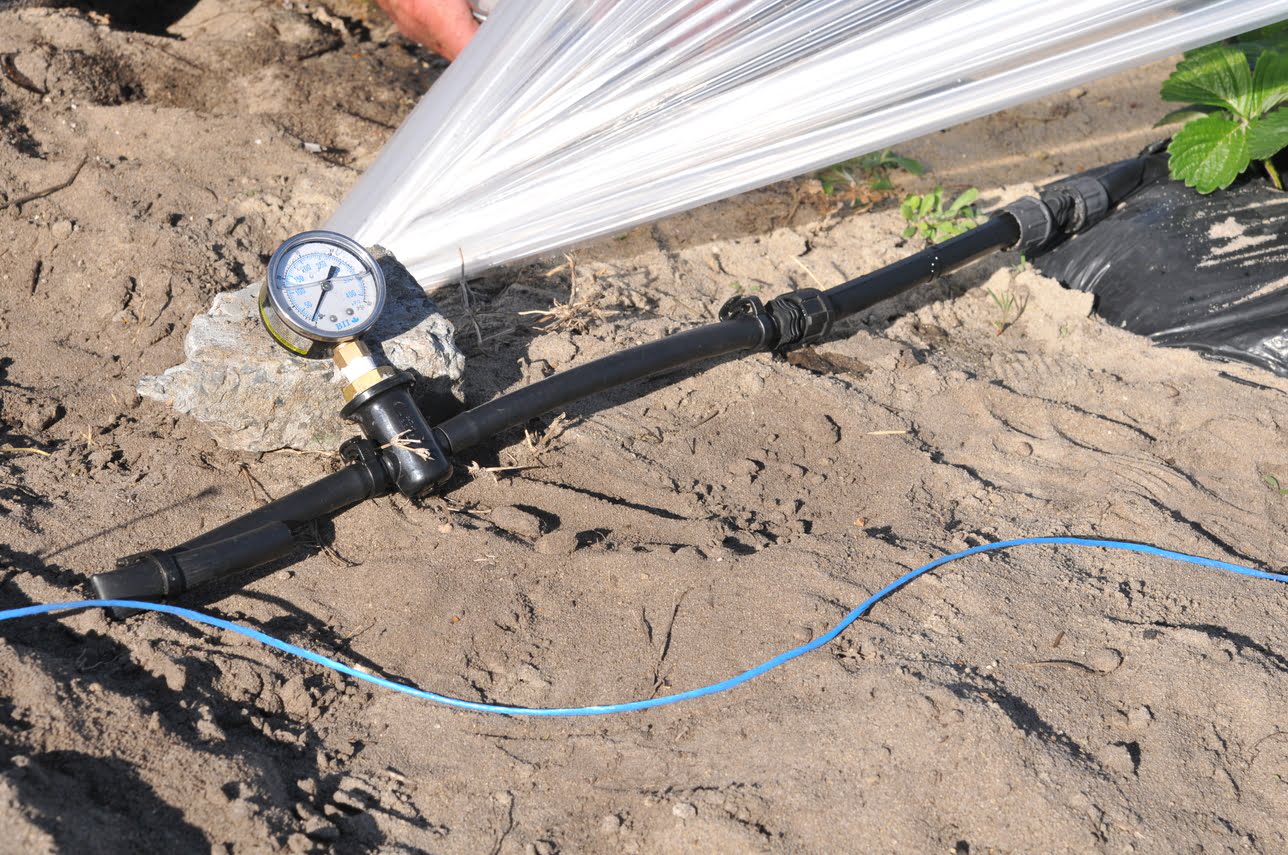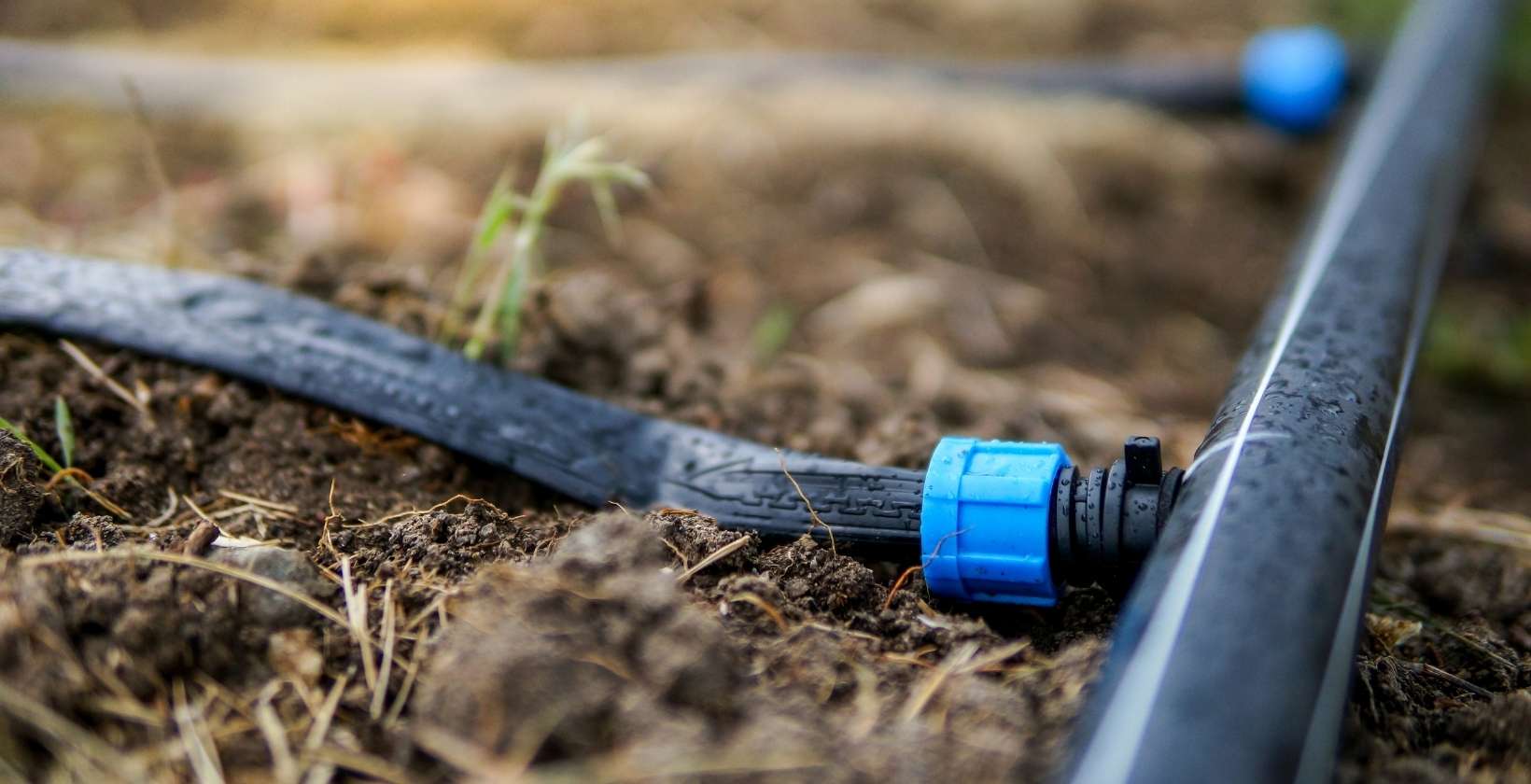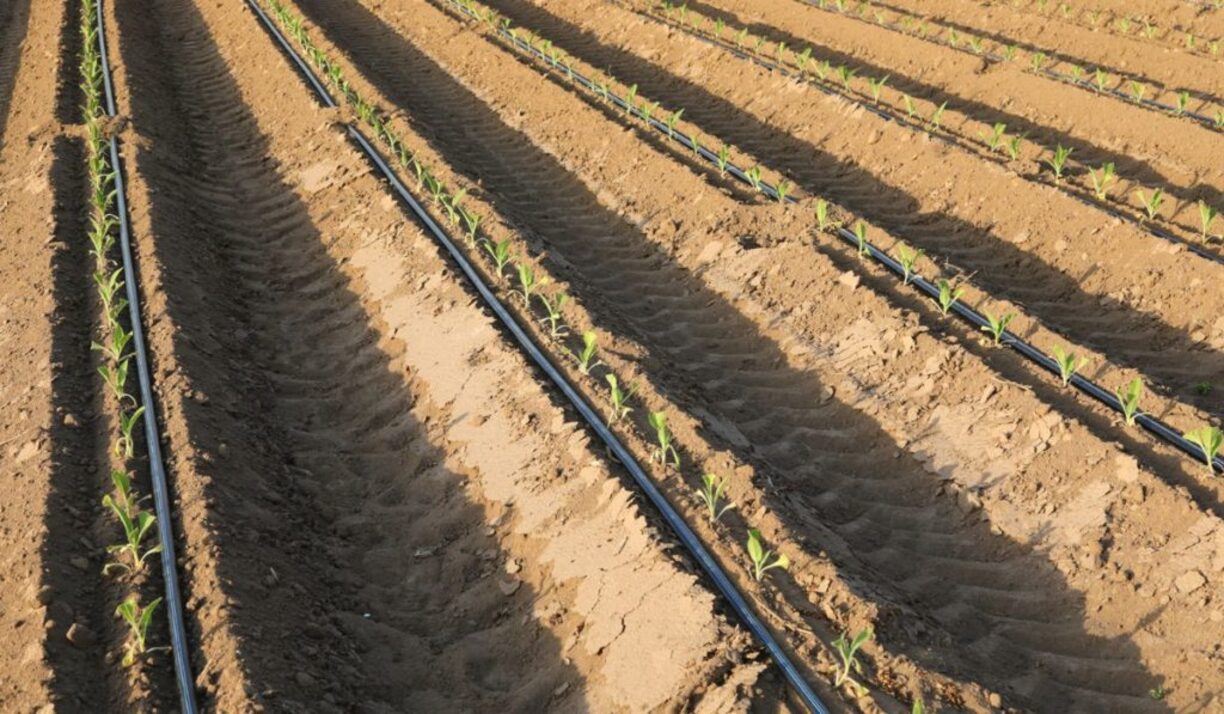Home>Gardening Techniques>DIY Projects>How To Hide Drip Irrigation Lines On Concrete


DIY Projects
How To Hide Drip Irrigation Lines On Concrete
Modified: January 22, 2024
Learn how to hide drip irrigation lines on concrete with these DIY projects. Create a seamless and aesthetically pleasing outdoor space.
(Many of the links in this article redirect to a specific reviewed product. Your purchase of these products through affiliate links helps to generate commission for Chicagolandgardening.com, at no extra cost. Learn more)
Table of Contents
Introduction
When it comes to DIY projects, one area that often gets overlooked is the appearance of our outdoor spaces. We put so much time and effort into creating beautiful gardens and landscapes, but what about those unsightly drip irrigation lines that run across our concrete surfaces?
Whether it’s a patio, driveway, or sidewalk, these irrigation lines can be a real eyesore, disrupting the overall aesthetic of our outdoor spaces. Luckily, there are several methods available to help hide and conceal these lines, allowing you to maintain the functionality of your drip irrigation system while also enhancing the visual appeal of your concrete surfaces.
In this article, we will explore different strategies and techniques to effectively hide drip irrigation lines on concrete. Whether you prefer a more traditional approach or want to get creative with decorative elements, we’ve got you covered.
By concealing these lines, you can create a polished and professional look for your outdoor area, giving it a neater and more organized appearance. Not only will this enhance the overall beauty of your space, but it will also improve the functionality and longevity of your drip irrigation system by protecting it from potential damage caused by foot traffic or accidental tripping over the exposed lines.
So, if you’re ready to take your outdoor DIY project to the next level and elevate the look of your concrete surfaces, let’s dive into the different methods you can use to hide those pesky drip irrigation lines!
Why hide drip irrigation lines on concrete?
When it comes to the aesthetics of our outdoor spaces, attention to detail is crucial. While we may take great care in designing and maintaining our gardens and landscapes, it’s important not to overlook the less visually appealing elements, such as drip irrigation lines on concrete surfaces.
Here are a few key reasons why you should consider hiding these lines:
- Aesthetics: Exposed drip irrigation lines can greatly detract from the overall beauty and ambience of your outdoor area. They can disrupt the clean lines and smooth surface of your concrete, creating an unfinished and cluttered appearance. By concealing these lines, you can achieve a more seamless and visually appealing look for your space.
- Safety: Tripping hazards are a genuine concern when it comes to exposed irrigation lines on concrete surfaces. Unwanted accidents can occur, especially when the lines are not easily visible. Hiding the lines ensures the safety of your family and guests, minimizing the risk of trips and falls.
- Durability: Concrete surfaces are prone to wear and tear over time due to foot traffic, weather conditions, and other factors. Exposed drip irrigation lines can be susceptible to damage, leading to leaks or even complete system failure. Concealing the lines guards them against potential hazards, prolonging the lifespan of your irrigation system and saving you from costly repairs.
- Professionalism: If you have a home-based business or frequently entertain guests, having exposed drip irrigation lines on your concrete surfaces can give off an unprofessional image. Hiding the lines contributes to a polished and well-maintained appearance, showcasing your attention to detail and enhancing the overall impression of your property.
- Flexibility: Concealing irrigation lines on concrete surfaces allows you to have more freedom in designing and utilizing your outdoor space. You can arrange furniture, planters, or decorative elements without being restricted by the presence of exposed lines. This flexibility opens up endless possibilities for creating your ideal outdoor oasis.
By understanding the importance of hiding drip irrigation lines on concrete surfaces, you can transform your outdoor area into a harmonious and visually appealing space. Now, let’s explore the different methods and techniques you can use to effectively conceal those irrigation lines.
Materials needed
Before you begin the process of hiding drip irrigation lines on concrete, it’s important to gather the necessary materials. The specific items required may vary depending on the method you choose, but here are some essentials you may need:
- Pavers or tiles: If you opt for the method of using pavers or tiles to conceal the irrigation lines, you will need an adequate amount of these materials. Choose pavers or tiles that match the style and color scheme of your outdoor space.
- Trench tools: If you plan on installing a trench to hide the irrigation lines, you will need necessary tools such as a shovel, trowel, and a trench digger. These tools will help you create the trench with precision and efficiency.
- Decorative elements: If you prefer the method of concealing the lines with decorative elements, gather items such as outdoor rugs, planters, or garden sculptures. These decorative elements will not only hide the irrigation lines but also add visual interest and personality to your outdoor space.
- Pipe clips or adhesive: To secure the drip irrigation lines in place, you may need pipe clips or adhesive depending on your chosen method. These items will ensure that the lines remain hidden and securely attached to the concrete surface.
- Measuring tools: Whether you’re using pavers, tiles, or decorative elements, having measuring tools such as a tape measure and level is essential. These tools will help you ensure precise placement and alignment, resulting in a neat and professional finish.
- Protective gear: Whenever you’re working with tools or materials, it’s important to prioritize safety. Invest in essential protective gear like gloves, safety glasses, and sturdy footwear to protect yourself from any potential accidents or injuries.
Make sure to assess your specific needs and plan accordingly before starting the project. Having all the necessary materials on hand will make the process smoother and more efficient. Now, let’s explore the different methods you can use to effectively hide drip irrigation lines on concrete.
Method 1: Using pavers or tiles
One popular method to hide drip irrigation lines on concrete is by using pavers or tiles. This approach not only conceals the lines effectively but also adds a visually appealing element to your outdoor space. Here’s how you can implement this method:
- Measure and plan: Start by measuring the dimensions of your concrete surface and calculating how many pavers or tiles you will need. Consider the spacing you want between them and any intricate patterns you may want to create.
- Clean the surface: Ensure that the concrete surface is clean and free of any debris or dirt. This will create a smooth and even foundation for the pavers or tiles.
- Apply adhesive: Apply adhesive to the back of each paver or tile, following the manufacturer’s instructions. This will help them adhere to the concrete surface securely.
- Place the pavers or tiles: Start placing the pavers or tiles onto the concrete, arranging them in the desired pattern. Use a level to ensure they are even and properly aligned.
- Secure the irrigation lines: Once the pavers or tiles are in place, carefully secure the drip irrigation lines to the concrete surface using pipe clips or adhesive. Make sure the lines are hidden beneath the pavers or tiles, and that they are not being crushed or damaged in the process.
- Fill the gaps: If there are any gaps between the pavers or tiles, fill them with sand or gravel to provide stability and prevent shifting.
- Finishing touches: Clean the surface of the pavers or tiles to remove any excess adhesive or debris. In addition, consider applying a sealant to protect the pavers or tiles from stains or damage caused by weather conditions.
By using pavers or tiles to hide the drip irrigation lines, you not only create a seamless and polished look but also ensure the functionality of your irrigation system. This method is versatile and allows for endless design possibilities, providing you with a customizable solution for your outdoor space. Now, let’s explore another method that involves installing a trench to hide the lines.
Method 2: Installing a trench
Another effective method to hide drip irrigation lines on concrete is by installing a trench. This approach allows for a clean and discreet concealment of the lines while maintaining easy access for maintenance or adjustments. Here’s how you can implement this method:
- Plan and mark: Start by planning the path of your trench. Consider the layout of your concrete surface and where the irrigation lines need to run. Use a marking tool or chalk to outline the path of the trench.
- Prepare the area: Clear any vegetation or debris from the marked path. Use a shovel to remove the top layer of soil and create a trench that is wide and deep enough to accommodate the drip irrigation lines.
- Install the lines: Carefully place the drip irrigation lines into the trench, ensuring they are securely positioned and aligned with the marked path. Use pipe clips to hold the lines in place if necessary.
- Fill and level the trench: Fill the trench with soil, compacting it to create a stable base. Use a level to ensure the trench is even and flush with the surrounding concrete surface.
- Hide the trench: To further conceal the trench, you can cover it with soil or mulch, smoothing it out to blend with the surrounding landscape. This will create a seamless and natural-looking transition from the concrete surface to the hidden irrigation lines.
- Maintain access: It’s important to ensure that the hidden drip irrigation lines are still accessible for maintenance and adjustments. Consider installing access points, such as removable pavers or panels, that can be easily lifted to reach the lines when needed.
- Test the system: Once the trench is complete, test the drip irrigation system to ensure that it functions properly. Check for any leaks, blockages, or uneven water distribution, and make any necessary adjustments.
By installing a trench to hide the drip irrigation lines, you create a discreet and functional solution for your concrete surfaces. This method offers convenience and accessibility while maintaining the overall aesthetics of your outdoor space. Now, let’s explore another method that involves concealing the lines with decorative elements.
Method 3: Concealing with decorative elements
If you’re looking for a more creative and customizable approach to hide drip irrigation lines on concrete, consider concealing them with decorative elements. This method allows you to not only hide the lines but also infuse your own personal style and flair into your outdoor space. Here’s how you can implement this method:
- Choose decorative elements: Select decorative elements that complement the style and theme of your outdoor space. This could include outdoor rugs, planters, garden sculptures, or even furniture pieces.
- Arrange strategically: Position the decorative elements strategically to cover or redirect attention away from the drip irrigation lines. Place them in a way that creates visual interest and enhances the overall aesthetic of your outdoor area.
- Create visual barriers: If you have larger decorative elements, such as tall planters or trellises, you can strategically position them to create visual barriers that naturally conceal the irrigation lines. This not only hides the lines but also adds depth and dimension to your outdoor space.
- Integrate with landscaping: Incorporate your decorative elements into the existing landscaping design. This could involve placing potted plants and flowers around the drip irrigation lines, blending them seamlessly with the surrounding greenery.
- Utilize outdoor rugs: Outdoor rugs are a versatile and practical way to conceal the lines while adding style and comfort to your concrete surface. Choose a rug that covers the area where the lines run, and incorporate it into your outdoor seating or dining area.
- Experiment with lighting: Use outdoor lighting creatively to draw attention away from the irrigation lines. By strategically placing lights, such as lanterns or string lights, you can create an enchanting ambiance while effectively concealing the lines.
- Maintain functionality: While concealing the lines with decorative elements, ensure that the drip irrigation system remains functional and accessible. Consider adding access points or removable panels to easily reach the lines for maintenance or adjustments.
By concealing drip irrigation lines with decorative elements, you can effortlessly transform your concrete surfaces into visually captivating outdoor spaces. This method allows for endless creativity and customization, making your outdoor area truly unique. Now, let’s explore some tips for maintaining and prolonging the effectiveness of your concealed irrigation lines.
Maintenance tips
Once you have successfully hidden your drip irrigation lines on concrete, it’s important to take preventative measures and perform regular maintenance to ensure the longevity and effectiveness of your concealed system. Here are some maintenance tips to keep in mind:
- Regular inspections: Periodically inspect the concealed lines to check for any signs of damage or leaks. Look for wet spots, uneven water distribution, or exposed areas that may require attention.
- Cleanliness: Keep the area around the concealed lines clean and free from debris. This will prevent any blockages or clogs in the system and ensure proper water flow.
- Protection from foot traffic: Take measures to protect the concealed lines from potential damage caused by foot traffic. Educate family members and guests about their presence and utilize visual cues, such as signs or barriers, to remind them to avoid stepping on the concealed lines.
- Adjustments and repairs: If you notice any issues with the water flow, pressure, or uneven distribution, make the necessary adjustments to the system. Repair any damaged or leaking parts promptly to prevent further damage and inefficiency.
- Regular maintenance checks: Schedule routine maintenance checks to ensure that your concealed drip irrigation system is functioning optimally. This may involve adjusting water timers, replacing filters, or flushing out any sediment or debris that may have accumulated in the lines.
- Weather considerations: Take note of seasonal changes and adjust the irrigation system accordingly. During dry spells or hot weather, you may need to increase the frequency or duration of watering. Conversely, during rainy periods, you may need to reduce the watering schedule to avoid overwatering.
- Professional assistance: If you encounter complex issues or are unsure about any aspect of your concealed drip irrigation system, don’t hesitate to seek help from a professional. They can provide expert advice, troubleshooting guidance, and ensure that your system is operating at its best.
By following these maintenance tips, you can prolong the lifespan of your concealed drip irrigation lines on concrete and enjoy a thriving and visually appealing outdoor space. Now that you have the knowledge and tools to effectively hide and maintain your drip irrigation system, it’s time to take action and elevate the beauty of your concrete surfaces!
Conclusion
As DIY enthusiasts, we strive to create beautiful and functional outdoor spaces. However, the presence of exposed drip irrigation lines on concrete surfaces can detract from the overall aesthetics and pose potential safety risks. That’s why hiding these lines is crucial to achieve a polished and visually appealing outdoor area.
In this article, we’ve explored three effective methods to hide drip irrigation lines on concrete: using pavers or tiles, installing a trench, and concealing with decorative elements. Each method offers its own unique advantages in terms of aesthetics, functionality, and customization.
Whether you choose to use pavers or tiles to create a seamless finish, install a trench for a discreet concealment, or get creative with decorative elements to infuse your personal style into the space, the goal is the same—to achieve a concealed drip irrigation system that blends seamlessly with your concrete surfaces.
Remember to gather the necessary materials, plan carefully, and prioritize maintenance to ensure the longevity and effectiveness of your concealed system. Conduct regular inspections, keep the area clean, and make any necessary adjustments or repairs promptly.
By hiding drip irrigation lines on concrete, you not only enhance the visual appeal of your outdoor space but also create a safer and more functional environment. Whether you’re hosting a gathering, running a home-based business, or simply enjoying the serenity of your outdoor oasis, the hidden irrigation lines will contribute to a neater, more organized, and professional atmosphere.
Now that you have the knowledge and tools to effectively hide and maintain your drip irrigation system, it’s time to unleash your creativity and bring your outdoor DIY project to the next level. Transform your concrete surfaces into stunning showcases of beauty and functionality, and enjoy the rewards of a well-concealed and thriving drip irrigation system.


